
|
May 25: Venus & Saturn
Venus, Saturn, and Neptune's location are seen in eastern and central Pisces
in this image from a clear Sunday morning on Memorial Day weekend.
|
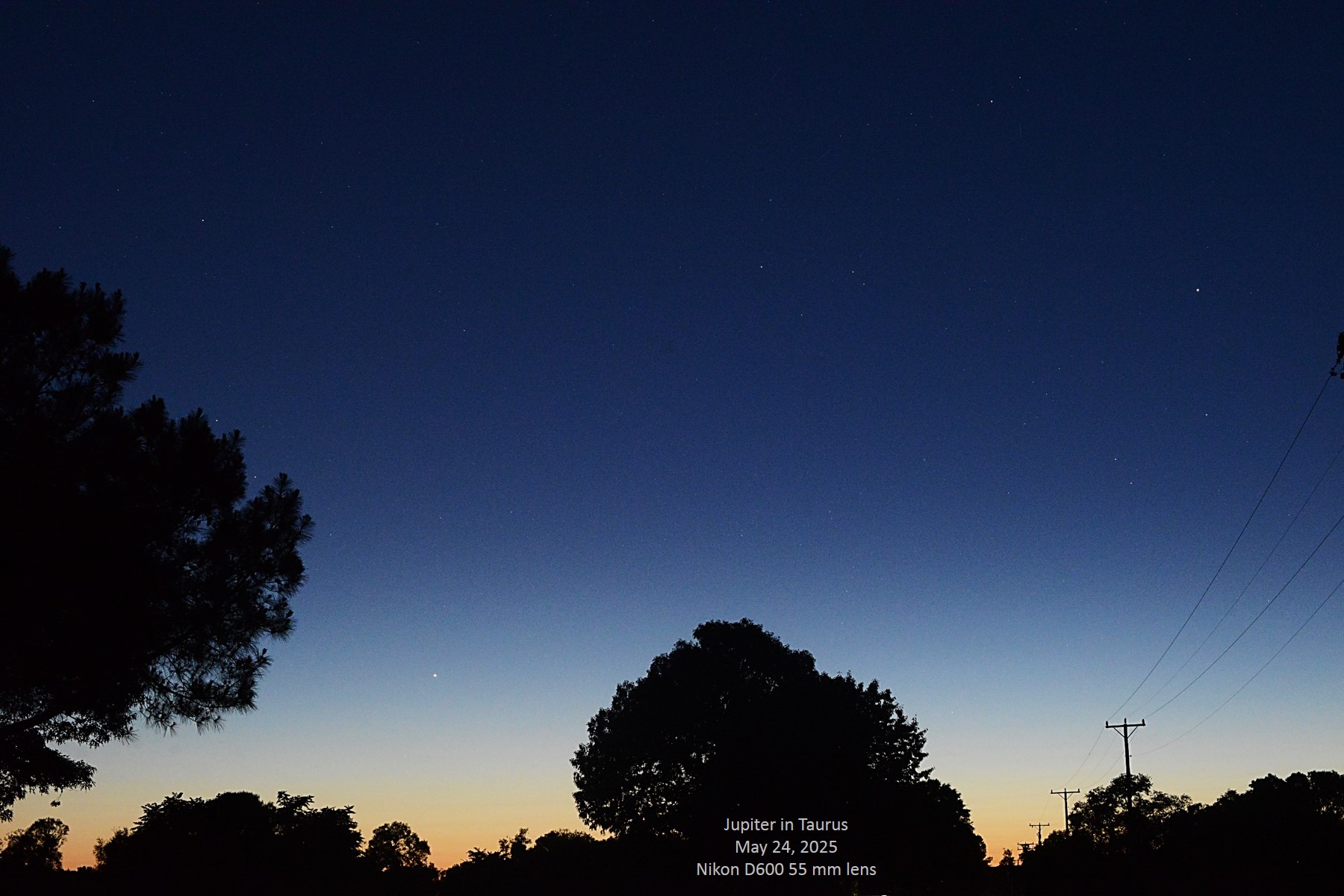
|
May 24: Jupiter and Capella
Jupiter is still bright enough to be easily seen in twilight, here making a nice
pairing with Capella in Auriga to its upper right.
|
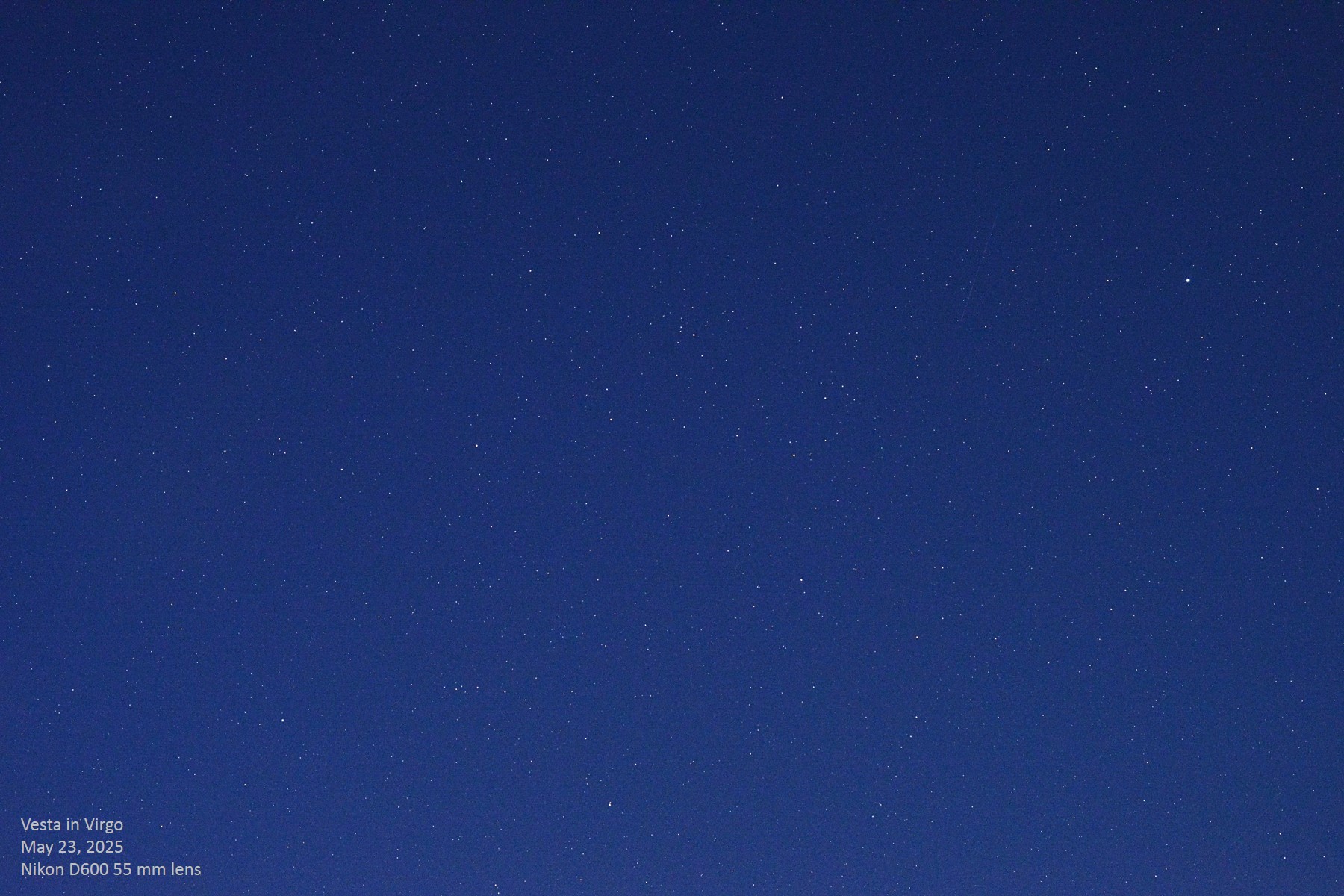
|
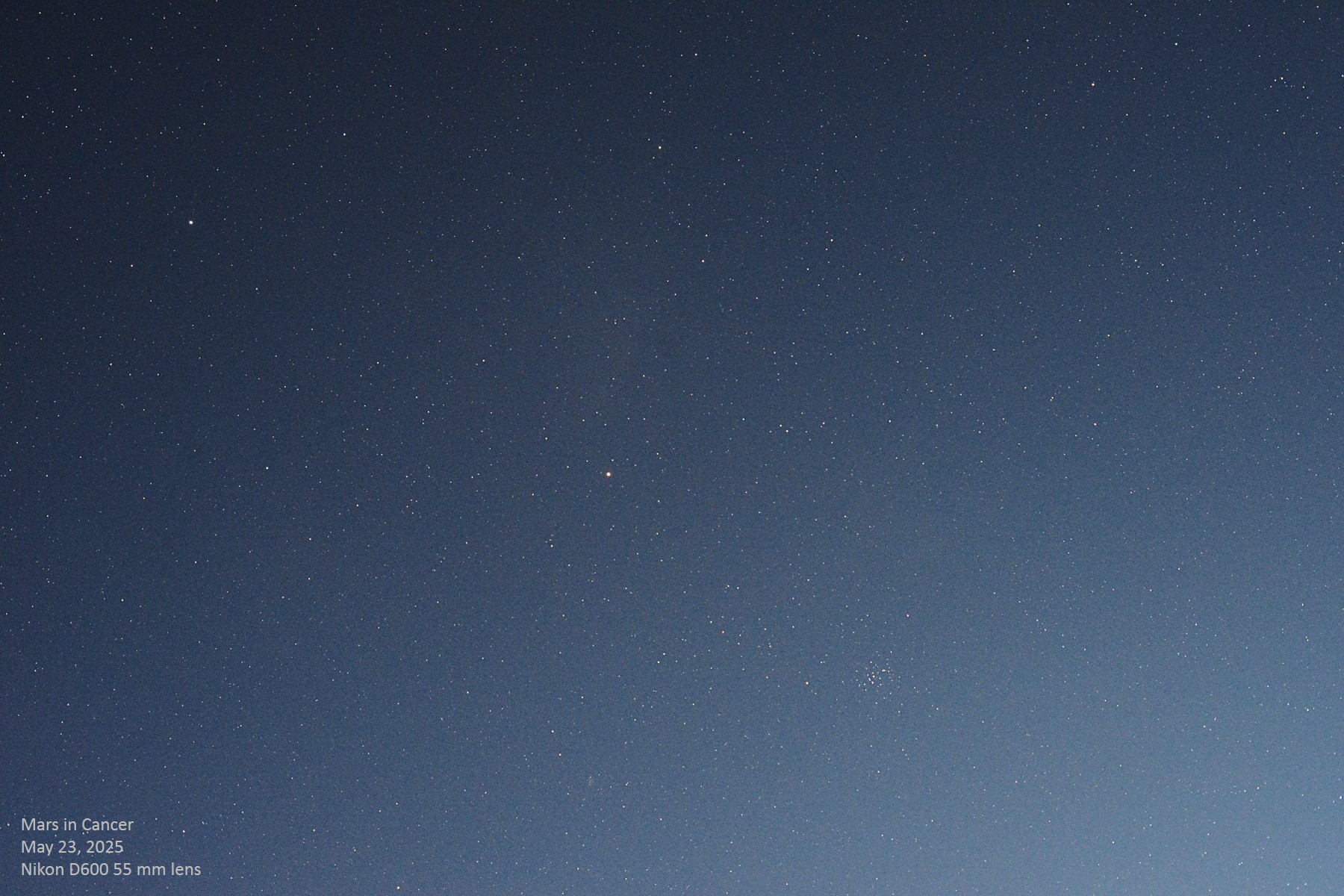
|
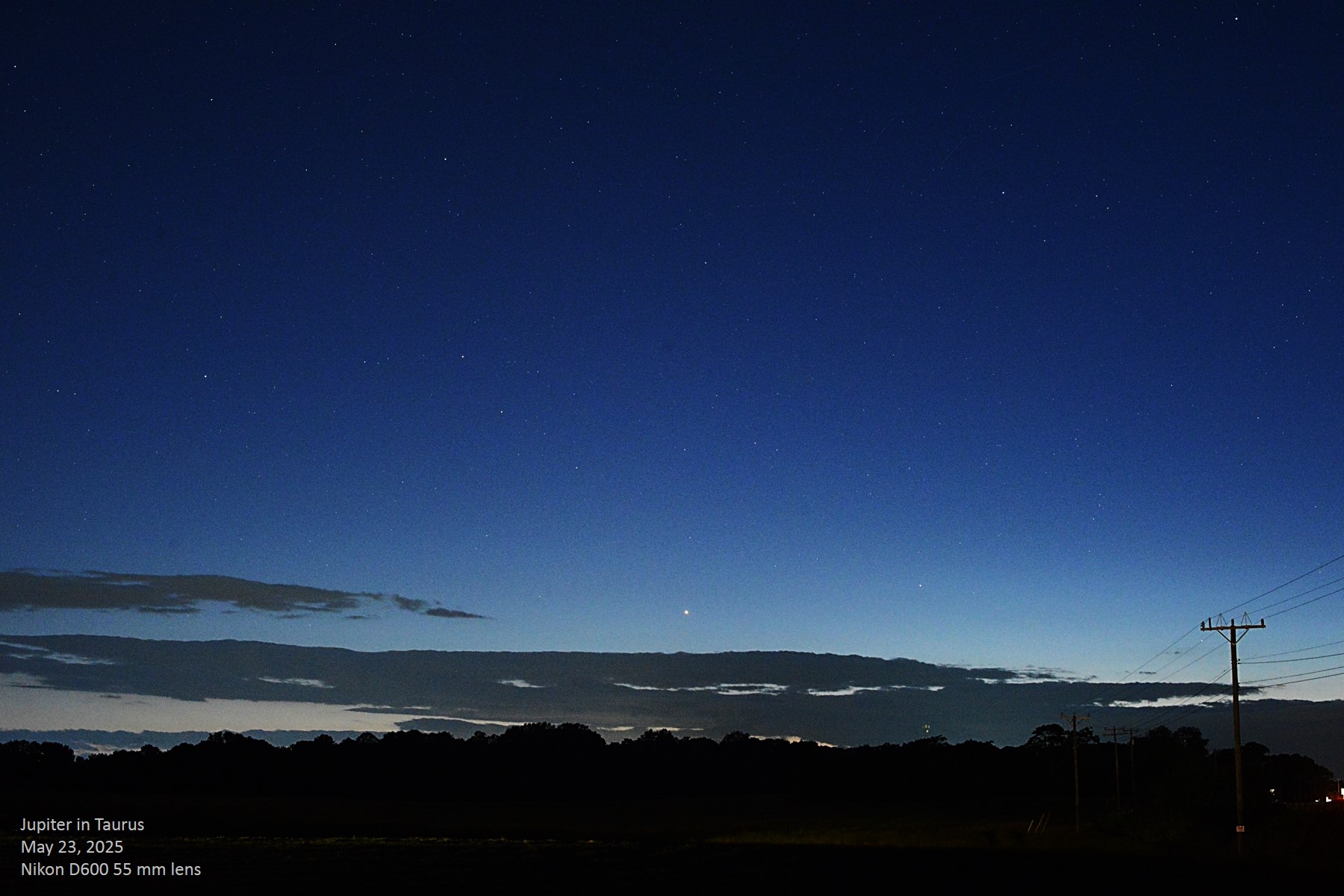
|
May 23: Jupiter, Mars and Vesta
After many days of rain and clouds, we enjoyed a glorious evening and took advantage by
checking in on Jupiter and Mars, as well as the brightest asteroid, Vesta. This
evening, Jupiter was magnitude -1.94, Mars was +1.21, and Vesta was +6.09. Using
the formula for finding the brightness ratio of two stars of given magnitudes, we see
that Jupiter is 18.2 times brighter than Mars, whereas Mars is 89.5 times brighter than
Vesta.
|
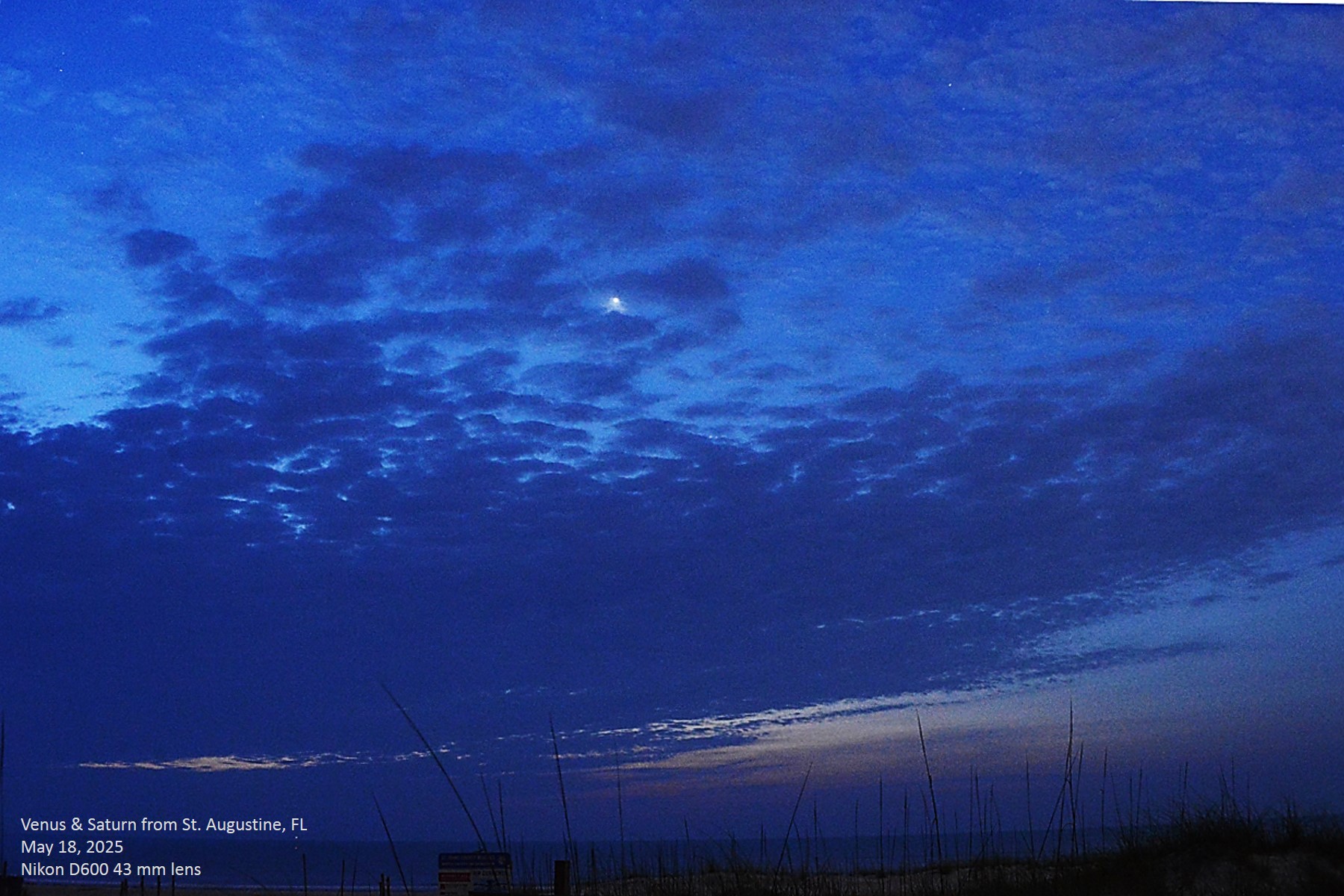
|
May 18: Venus and Saturn from Florida
Venus and Saturn are gaining in prominence in the dawn sky, but especially so if we travel
south as we did in this instance. From the beach south of St. Augustine we can see
the two planets in bright twilight but unfortunately also enmeshed in a mostly cloudy sky.
|

|
May 11: Moonrise over Lake George
I visited my lady friend Laura in upstate New York and while there took time
out to get some pictures of the almost full Moon rising over Lake George from
one of the public access parks in Bolton Landing.
|

|
May 8: Jupiter from Guam
My good friend Action Jackson was on travel to the Pacific and got this
beautiful shot of twilight from a beach in Guam that also included the
faint speck of Jupiter near the top of the image.
|

|
May 6: Jupiter in the Evening
Jupiter is sinking into the twilight as May progresses. Here we see it in
eastern Taurus, still almost directly above Aldebaran, and slowly encroaching on the ecliptic.
|

|
May 5: Sun with Massive Sunspot Group
Our cloudy weather broke just in time for me to attempt a shot of the huge sunspot
group 4079 while it was near the middle of the solar disk.
|

|

|
May 4: Mars in the Beehive and Quiescent T CrB
We had a nice view of Mars in the midst of the Beehive cluster, otherwise known as M 44 in Cancer, despite the
bright first quarter Moon nearby. Also, we have yet another look at the northern crown, Corona Borealis,
to check in on the Blaze Star, known as T Coronae Borealis. It barely registered a few faintly illuminated
pixels, so there is clearly still no eruption.
|